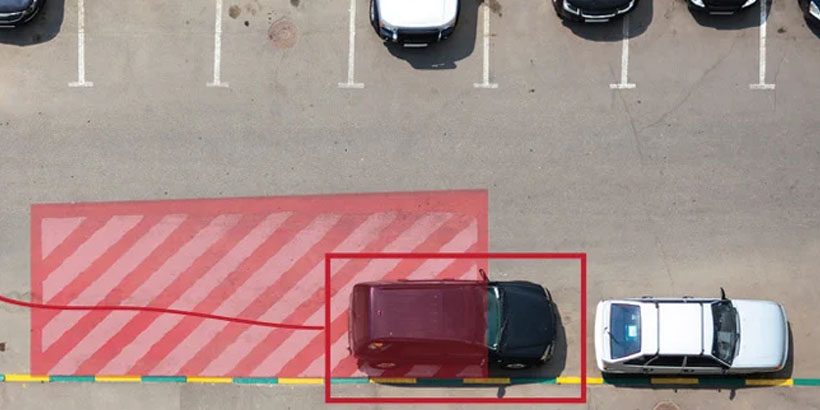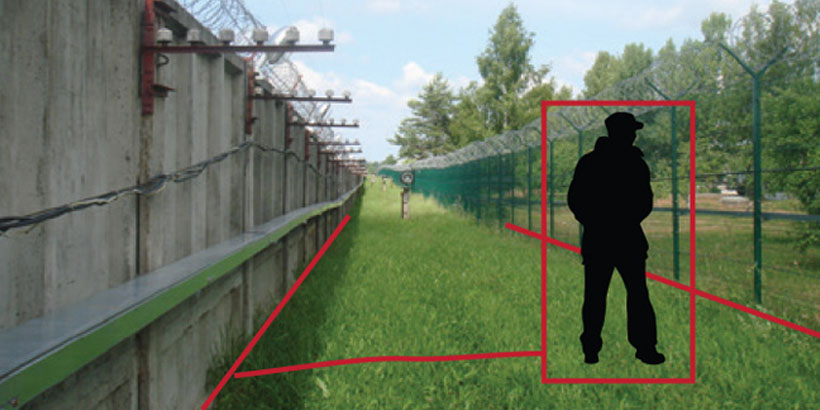As developments in video processing are embraced by the surveillance sector, so the ability to deploy smart analytics becomes ever greater. Whether the goal is to enhance the protection on offer to people, assets and property, to create business efficiencies, to manage challenges presented by ongoing situations or to streamline the management of sites, video analytics has a role to play. By integrating video analytics with a video management system, a wealth of benefits can be realised by most businesses and organisations.
The modern security market enjoys an embarrassment of riches when it comes to the creation of smart solutions, allowing a wide range of added value benefits to be realised using the available technologies. IVA – intelligent video analytics – gives the ability to detect anomalies and filter out nuisance alarms or innocuous activity, via an advanced but cost-effective package.
The benefits of IVA include enhanced security and business intelligence applications. Video remains an effective technology when it comes to the detection of exceptions and real-time status changes.
Today’s advanced video solutions are increasingly being used in proactive ways, helping to detect incidents and threats, even spotting trends, which allow businesses and organisations to take action before an incident occurs. Additionally, today’s technologies allow users to quickly gather and assess all relevant data, without wasting time searching for valuable information amongst a sea of footage containing little or nothing of interest. This is because IVA can be used both to trigger alarms and to filter searches.
Advances in processing and data management have resulted in smarter video analytics. The available processing power allows multiple IVA implementations to be carried out on the same video stream which can add layers of alarm filtering, thus enhancing the credibility of the solution. Combining different IVA configurations also allows actions to be prioritised or adapted to specific circumstances.
CathexisVision and IVA processing
CathexisVision 2020 offers a range of video analytics. Some are included as standard in the VMS package, such as basic motion detection, basic line crossing, basic people counting and camera tamper detection. Motion search is also included as standard.
With licensable modules, the range of video analytics can be expanded. This enables use of smart VMD; customisable line cross detection including filters for speed and direction, and the ability to create segmented lines; presence in an area, including loitering, stopping in an area, object left/removed, enter/exit area, queue monitoring and filtering by size and shape; people counting with tracking; object classification, identifying people, vehicles or animals.
In line with the growing emphasis on managing COVID-Secure sites, CathexisVision also includes tracking of occupancy, proximity and mask detection, along with integrations with third party thermal cameras for body temperature measurements.
When deploying IVA, accuracy is one of the most important elements. Often video analytics struggle to deliver the level of performance expected by end users for a simple reason: visual changes which are of no consequence or innocuous are detected and notified to the operator. The accuracy of IVA systems is dictated by the amount of filtering which can be implemented. High quality solutions are often differentiated from poor performing solutions based on how well they filter out activities which are of no importance.
To maintain high levels of catch performance, CathexisVision 2020 makes use a wide range of discriminations to ensure normal activities and irrelevant behaviours are not notified to the operator. The flexibility afforded to users ensures they can adjust the algorithm parameters until the performance is as required. To aid in the process, the software provides performance feedback to make the configuration faster and more intuitive.
It is possible to set inclusion zones, defining portions of the overall image which are used for detection. Objects can be classified as people, vehicles or animals, and activities can be filtered based upon direction of travel, size of the target, speed, etc.. Environmental causes of nuisance activations can also be eliminated, with the eradication of alarms generated by camera shake, shadows, global scene change, etc..
Analytics options
All the algorithms used by CathexisVision 2020 can be enhanced with the use of object classification. The VMS uses AI-enabled technologies to assess the video stream and classify objects. This gives a reliable indication of whether or not a scene includes a person, vehicle or animal. This can enhance the accuracy of IVA rules. For example, if the IVA is being used to detect people loitering around an ATM, the operator only needs notifications if a person is in the scene. This eliminates nuisance notifications if a large object, but not a person, is stationary near the cashpoint.
An alternative use, with a safety application, would be to notify a depot manager if pedestrians are walking in a vehicle-only area. In such a deployment, vehicles moving in the area would be ignored, regardless of their size, whereas people or animals would create an alert. This could be a push notification to personnel, triggering of an audio warning or switching traffic lights to red, closing barriers or any other designated action.
With IVA which doesn’t employ object classification, such operations can be somewhat hit-and-miss, with occasional nuisance activations. By implementing accurate object classification, CathexisVision 2020 ensures advanced deployments can be both accurate and consistently reliable.

One of the more common IVA algorithms detects the presence of an object in the viewed scene. The use of object classification creates an alert if a specified target is detected with a user-configured inclusion zone. If a person, vehicle or animal (or other object if classification is not applied) is detected according to the configured parameters, a trigger will occur. IVA can also be used to detect entry into, or exit from, a selected area. Alarms are created by objects entering the defined area, leaving it, or both.
IVA can be applied to detect instances of loitering or objects stopping in a defined area. There is a subtle difference with these two algorithms. Stopping events occur when an object enters the inclusion zone and then ceases motion for a greater period than the pre-determined time. Loitering differs, in that it detects objects which remain in the inclusion area for longer than the predetermined time. Stopping might be used to detect unauthorised parking in a restricted area, while loitering would be used to detect people remaining in the vicinity of an ATM, for example.
Line-cross detection is another popular IVA algorithm which allows a high degree of flexibility if deployed intelligently. With line cross detection, virtual lines are added to the video scene, and a trigger is generated when an object crosses these. To allow for advanced filtering, targets can be defined by type using classification, by size or by direction (forward, reverse or both). In basic implementations, a single line is added. However, line cross detection also offers more advanced options.
The virtual line can be segmented, allowing a virtual perimeter to be set regardless of the shape of a protected area. Parts of the viewed scene can be identified and treated differently, dependent upon user needs. Flexibility is increased by the ability to generate zoned alarms. For example, two lines can be included to create a pre-alarm condition. For example, a person crossing the first line can be tracked, but an alarm condition will only be generated if they cross a second line.
Speed can also be included, either as a trigger or as part of a sequence of filters. By establishing two points over a defined distance, the speed of a target can be established. This allows notifications to be based on vehicles exceeding a speed limit, or where people are running instead of walking.
Object left and object removed detection again offer a high degree of flexibility in a range of applications. This could, for example, identify if a bag or package is left in an area such as a transport terminal or an office foyer. Based upon a defined time window, the algorithm will issue a notification if an object is left in a high risk space, even if it is partially obscured. This can also be used to ensure fire exits or access points are not blocked. With object removed detection, the algorithm will trigger an event if an identified item is removed from the scene.
CathexisVision 2020 also includes ANPR (automatic number plate recognition), which makes use of optical character recognition to log vehicle registration numbers. The algorithm can read plates from more than 200 countries and supports feeds from both standard video cameras and specialised ANPR cameras. Number plate data can be stored for later retrieval, or can be used to cross-reference black-lists and/or white lists, effectively automating vehicular access control and enhancing site security.
IVA can also be used to assist with site management. For example, the queue length monitoring algorithm can generate automated notifications if waiting times are too long. This algorithm can be used for people, vehicles or other objects. It works by generating a series of zones, and then assessing how long targets wait in the specific zones. If queue times are excessive, it can notify personnel. This will allow management to address delays, opening alternative gates if it is a vehicle queue, or opening points of sale if a queue forms in a retail environment.
Finally, it is critical that security-based applications are managed by operators in an efficient and continuous manner. A no motion algorithm can be used inside the control, room, detecting if there is no movement or activity. This might be useful if an operator falls ill, but can also detect if they have left the control room or, indeed, have fallen asleep.
In summary
IVA offers a diverse range of benefits in video surveillance applications, enhancing security and assisting with implementing efficiencies at a business or organisation. CathexisVision 2020 utilises a wide range of video analytics to ensure a high level of flexibility in a number of applications.
When specifying video analytics, it is critical to ensure the algorithms have been created to deliver accuracy, high catch performance and consistency in a variety of environmental conditions. Unless the IVA offering delivers true flexibility, the solution will always be compromised.


